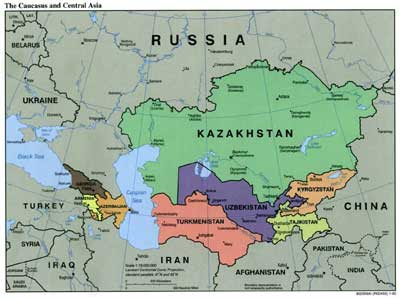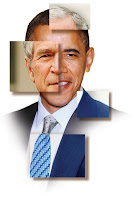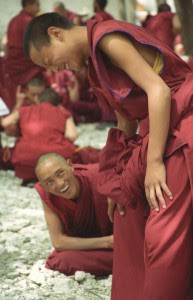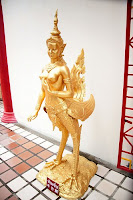John D. Ireland (translator), Wisdom Quarterly edit, Inspired Utterances (Ud. 6.4)
 Buddhist novice meditating above the tangled canopy (Mattravel/Flickr.com)
Buddhist novice meditating above the tangled canopy (Mattravel/Flickr.com)Thus have I heard. At one time the Buddha was staying near Savatthi in the Jeta Wood at the multi-millionaire's monastery.
At that time there were a number of recluses and brahmins, wanderers of various sects, living around Savatthi. They were of various views, of various beliefs, of various opinions. And they relied for their support [by reasoning] based on their various views.
There were some recluses and brahmins who asserted and held this view: "The world is eternal; only this is true, any other (view) is false."
There were some recluses and brahmins who asserted: "The world is not eternal; only this is true, any other (view) is false."
There were some who asserted: "The world is finite...
The world is infinite...
The life-principle and the body are the same...
The life-principle and the body are different...
The Tathagata [person who has attained liberation from samsara, such as the Buddha] exists beyond death [of the body]...
The Tathagata does not exist beyond death...
The Tathagata both exists and does not exist beyond death...
The Tathagata neither exists nor does not exist beyond death; only this is true, any other (view) is false."
And they lived quarrelsome, disputing, and wrangling, wounding one another with verbal darts, saying:
Then a number of Buddhist monastics, having put on their robes in the forenoon and taken their bowls and outer cloaks, entered Savatthi for almsfood. Having walked in Savatthi for almsfood and returned after the meal, they approached the Buddha, prostrated themselves, sat down to one side, and said:
"At present, venerable sir, there are a number of recluses and brahmins, wanderers of various sects, living around Savatthi. They are of various views... saying: 'Dharma is like this!... Dharma is like that!'"
[The Buddha replied:] "The wanderers of other sects, disciples, are blind, not seeing. They do not know what is [karmically] beneficial [in terms of practice now and future results from profitable and unprofitable actions willed, performed, and accumulated]; they do not know what is harmful. They do not know what is Dharma; they do not know what is non-Dharma.
"Not knowing what is beneficial and what is harmful, not knowing what is Dharma and what is non-Dharma, they are quarrelsome... saying: 'Dharma is like this!... Dharma is like that!'
"Formerly, disciples, there was a certain king in this very city of Savatthi. And that king addressed a man: 'Come now, my good man, bring together all those persons in Savatthi who have been blind from birth.'
"'Yes, your majesty,' that man replied, and after detaining all the blind people in Savatthi, he approached the king and said, 'All the blind people in Savatthi have been brought together, your majesty.'
"'Now, my good man, show the blind people an elephant.'
"'Very well, your majesty,' the man replied to the king, and he presented an elephant to the blind people, saying, 'This, blind people, is an elephant.'
 The blind men examine an elephant (jainworld.com)
The blind men examine an elephant (jainworld.com)
"To some of the blind people he presented the head of the elephant, saying, 'This is an elephant.' To some he presented an ear of the elephant, saying, 'This is an elephant.' To some he presented a tusk... the trunk... the body... the foot... the hindquarters... the tail... the tuft at the end of the tail, saying, 'This is an elephant.'
"Then, disciples, the man, having shown the elephant to the blind people, went to the king and said, 'The blind people have been shown the elephant, your majesty. Now do as you see fit.' Then the king approached those blind people and said, 'Have you been shown the elephant?'
"'Yes, your majesty, we have been shown the elephant.'
"'Tell me, blind people, what is an elephant like?'
"Those blind people who had been shown the head of the elephant replied, 'An elephant, your majesty, is just like a water jar.'
"Those blind people who had been shown the ear of the elephant replied. 'An elephant, your majesty, is just like a winnowing basket.'
"Those blind people who had been shown the tusk of the elephant replied, 'An elephant, your majesty, is just like a ploughshare.'
"Those blind people who had been shown the trunk replied, 'An elephant, your majesty, is just like a plough pole.'
"Those blind people who had been shown the body replied, 'An elephant, your majesty, is just like a storeroom.'
"Those blind people who had been shown the foot replied, 'An elephant, your majesty, is just like a post.'
"Those blind people who had been shown the hindquarters replied, 'An elephant, your majesty, is just like a mortar.'
"Those blind people who had been shown the tail replied, 'An elephant, your majesty, is just like a pestle.'
"Those blind people who had been shown the tuft at the end of the tail replied, 'An elephant, your majesty, is just like a broom.'
"Saying 'An elephant is like this, an elephant is not like that! An elephant is not like this, an elephant is like that!' they fought each other with their fists. And the king was delighted (with the spectacle).
"Even so, disciples, are those wanderers of various sects blind, not seeing... saying, "Dharma is like this!... Dharma is like that!'"
Then, on realizing the significance, the Buddha made this inspired utterance on this occasion:
Some recluses and brahmins, so called,
Are deeply attached to their own views;
People who only see one side of things
Engage in quarrels and disputes.
Source: ATI - For free distribution only, as a gift of Dharma (dhamma-dana).
 Sacred buried treasure can be found throughout Afghanistan (Wall Street Journal)
Sacred buried treasure can be found throughout Afghanistan (Wall Street Journal)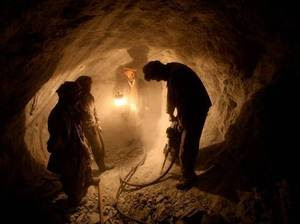 Mining in Afghanistan (NPR)
Mining in Afghanistan (NPR)